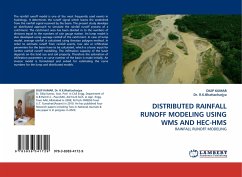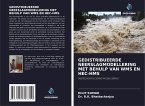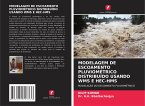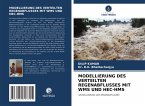The rainfall runoff model is one of the most frequently used events in hydrology. It determines the runoff signal which leaves the watershed from the rainfall signal received by the basin. The present study develops an distributed approach to simulate the rainfall runoff process of a catchment. The catchment area has been divided in to the numbers of divisions equal to the numbers of rain gauge station. An lump model is also developed using average rainfall of the catchment. In case of lump model, average rainfall is calculated using thessian polygon method. In order to estimate runoff from rainfall events, loss rate or infiltration parameters for the basin have to be calculated, which is a basic input for further rainfall runoff modelling. The infiltration capacity of the basin depends on the land use and soil property. Therefore the estimation of infiltration parameters or curve number of the basin is made initially. An inverse model is formulated and solved for estimating the curve numbers for the lump and distributed models.
Bitte wählen Sie Ihr Anliegen aus.
Rechnungen
Retourenschein anfordern
Bestellstatus
Storno








